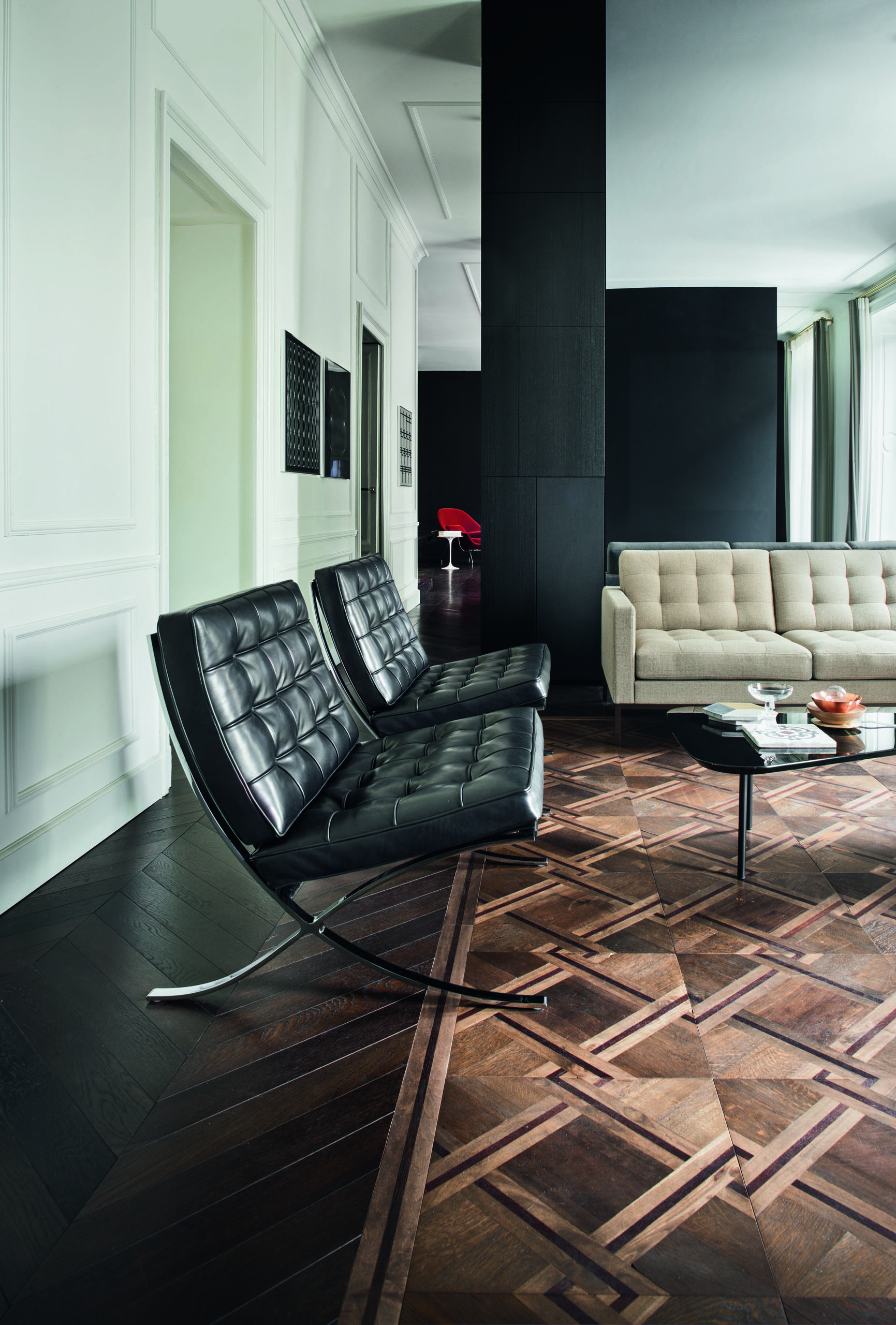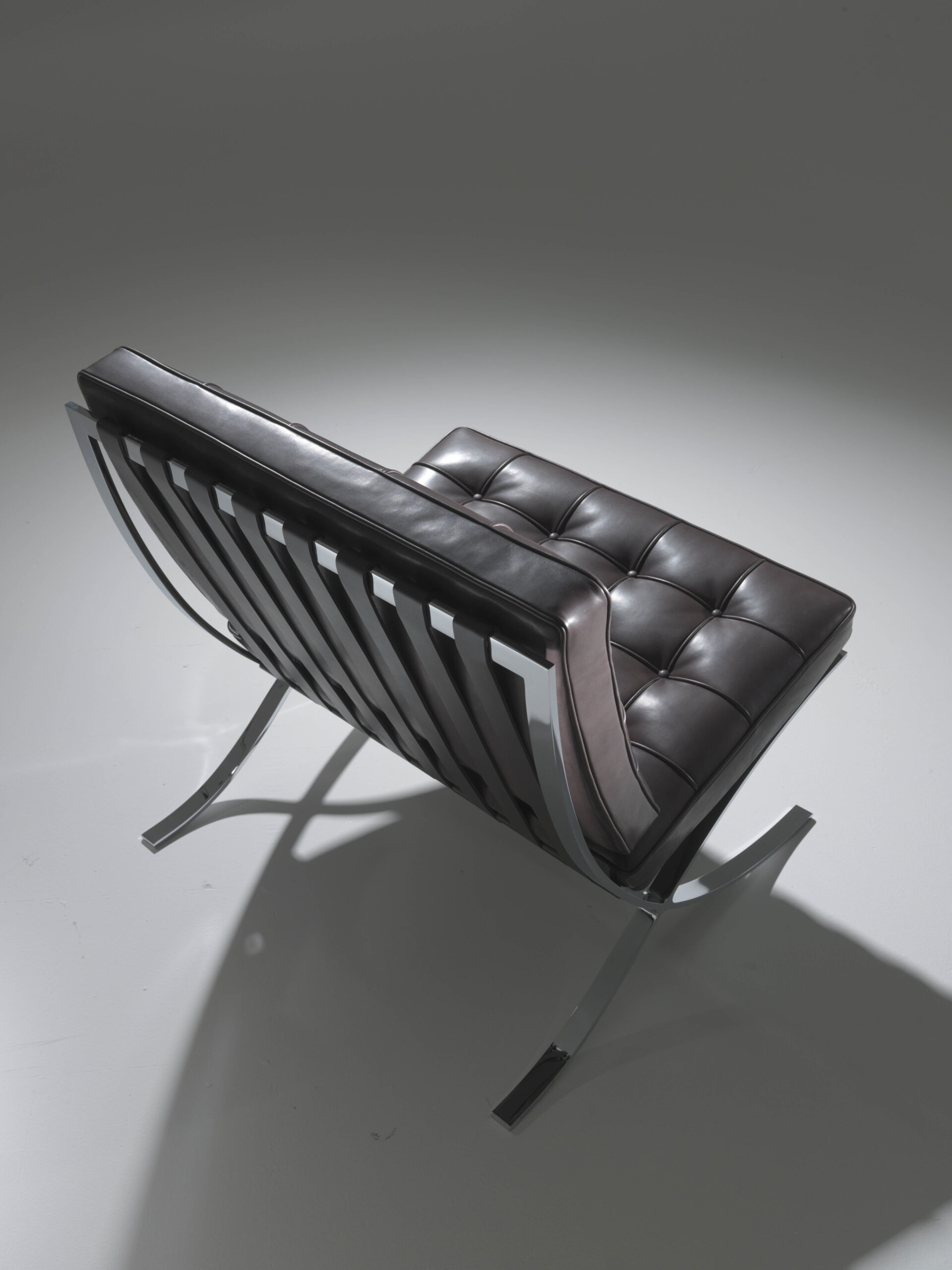The Barcelona chair
Knoll
The Barcelona isn’t just a chair, it’s perfection
Designed by celebrated Bauhaus architect Ludwig Mies van der Rohe, in collaboration with his partner Lilly Reich, for the 1929 German Pavilian at the Barcelona Exposition, they caused an immediate sensation. Originally only two were created, one each for King Alfonso XIII and his wife Ena. They didn’t sit in them, either.
Based on the folding chairs favoured by the Pharoahs and Romans, the Barcelona captures the timelessness of an ancient throne with the clean lines of modernity.

knoll.com
It was Mies van der Rohe who coined the much-used phrase ‘less is more’ and the Barcelona is the ultimate example of this. Made from top-quality leather and steel, it’s as much about the space, even the person and atmosphere, on and around it as the chair itself. And that space almost always exudes glamour – perfection attracts beauty – so it’s little wonder that it’s a James Bond favourite, appearing in both Casino Royale and Die Another Day.
Instantly recognisable as a symbol of success, the Barcelona has had just one design tweak since 1929. Originally the metal frame was two pieces bolted together, but in 1950 when stainless steel became available, Mies van der Rohe incorporated it to make one seamless piece. It’s been in production for 80 years, and in 1953 the designer gave exclusive manufacturing and sales rights to Knoll, who continue to produce the chair to his exact specifications.
Although there are many copies, the genuine article has the Knoll Studio logo and Ludwig Mies van der Rohe signature stamped onto the leg; it’s hand-upholstered and the frame is even hand-buffed to achieve that glossy mirror finish.

knoll.com
Interesting facts
- Knoll gifted a replica of the original 1929 chair to New York’s Museum of Modern Art
- The chair has its own page in the Barcelona Yellow Pages
- Mies van der Rohe first used the term ‘God is in the details’
- The Barcelona ottoman and footstool weren’t designed by van der Rohe, but follow the same design principles
- The chair’s cushions are upholstered with 40 individual panels cut, hand-welted and hand-tufted from a single hide
Before you go...
...fancy automatic entry to all future competitions?
Simply register online today for FREE and you will get:
Automatic entry to all current and future competitions.
Access to Reclaim Inspiration - an online visual pinboard for saving all your home and style inspiration.
A regular newsletter of inspiration, ideas and advice.

Save all your articles in one place
Become a Reclaim Member to save all your home and style inspiration. Simply login or register online today for FREE and you will get:
Automatic entry to all current and future competitions.
Access to Reclaim Inspiration - an online visual pinboard for saving all your home and style inspiration.
A regular newsletter of inspiration, ideas and advice.








